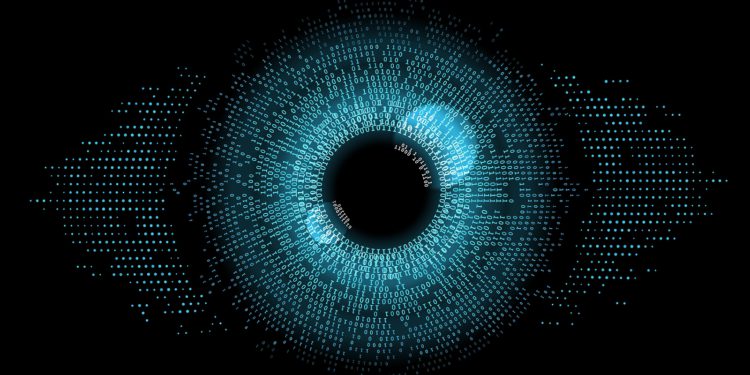As we all know, every iOS update brings new privacy and security features - and so does iOS 16. Apple has added tools that make it easier to install security updates, new Face ID features, improvements to photo security, and much more. We've summarized all the new features below.
There's a new Safety Checkout feature in the Settings app in iOS 16 that lets you quickly reset all the data and access to your location that you've granted to others. Apple says Safety Checkout is aimed at people affected by domestic or intimate partner violence. You can access the feature by opening the Settings app and tapping the Privacy & Security section. From there, scroll down to Safety Checkout. The tool has two options, including an emergency reset and a checklist of all your data sharing options. Note that Safety Checkout has a Quick Exit button that lets you return directly to the iPhone home screen in case someone else catches you using Safety Checkout.
iOS 16 emergency reset
Emergency Reset is an option that lets you protect your iOS device with just a few taps. When you use the feature, all data will be immediately stopped being shared with all people and apps. This includes everything you share with others, such as location information, your private data, photo albums, and more. Emergency Reset also lets you delete all emergency contacts and reset your Apple ID and password so no one can log into your account. For less urgent cases, there's a guide to managing sharing and access that helps you keep track of what you're sharing so you can't be secretly tracked or monitored through location sharing, shared albums, or other iPhone features.
Manage Release
You can see exactly who you're sharing with and what data they have access to, and which apps have access to your data. You can select people or apps and choose Stop Sharing to immediately turn off sharing. You'll also see a list of all the third-party apps you've installed and what data they have access to. You can see what permissions an app has on an individual basis or by data like Bluetooth, location, contacts, and more. Under Manage Sharing, you'll see exactly which devices your iCloud account is signed in to and have the option to sign out. You can also reset your Apple ID and password and turn off emergency contacts.
iOS 16: Locked, hidden and recently deleted photo albums
In the Photos app in iOS 16, the Hidden and Recently Deleted albums cannot be opened without biometric authentication using Face ID, Touch ID, or a passcode.
Face ID in landscape mode
On iPhone 13 models, Face ID works in landscape mode after iOS 16 is installed. This allows Face ID to unlock the iPhone regardless of whether it is held in portrait or landscape mode.
Rapid security response
With iOS 16, Apple can release security updates without having to update the entire operating system. In iOS 15, security updates are tied to iOS updates and require a complete software update. But with iOS 16, it will be easier for Apple to distribute security updates and download them faster. When you update to iOS 16, Apple will set your device to install security updates automatically. Of course, this feature can be disabled under General -> Software Update -> Automatic Updates.
clipboard permissions
Apps in iOS 16 need explicit user permission before they can access the clipboard to copy and paste content. Apps must ask to use the copy and paste feature, similar to how apps need permission to access the microphone, camera, location, and other sensitive data.
iOS 16 passkeys
With iOS 16 and its sister updates, Apple is introducing passkeys to replace traditional passwords when logging into a website or app. Apple claims that passkeys are more secure than passwords and protect users from phishing, malware, and other attacks that try to re-access their account. Passkeys are not yet implemented in the iOS 16 beta, but will be introduced later this year.
How Passkeys Work
Passkeys work through a key system. One key is public and stored on the website's server, while the second key is private and stored on the device. On the iPhone and other devices with biometric authentication, Face ID or Touch ID is used to authorize the passkey and authenticate the user on a website or app. The website's key and the Apple device's key must match to log in. Because the device's key is private and only available to the user, it cannot be stolen, shared, or forged. Passkeys use iCloud Keychain, which requires two-factor authentication for additional protection. Passkeys are synced to all of a user's devices using iCloud Keychain, which is end-to-end encrypted with its own cryptographic keys.
Passkeys rely on the iCloud keychain
Syncing passwords across devices provides redundancy in the event that an iPhone is lost. In the event that all of a person's Apple devices are lost and their passwords are lost, Apple has set up an iCloud Keychain escrow feature that can be used to recover passwords. There is a multi-step authentication process that one must go through to recover an iCloud Keychain with passkeys or one can set up a person as a contact for account recovery, more about it here.
lockdown mode
iOS 16 adds Lockdown Mode, which provides an "extreme" level of security for activists, journalists, and others who are the target of sophisticated cyberattacks. Lockdown Mode restricts or disables many of the iPhone's features and locks apps and websites. Lockdown Mode blocks most types of attachments in messages, blocks FaceTime calls from non-contacts, restricts web browsing features, prevents the installation of configuration profiles, and much more. If you want to learn more about the feature, you can find a detailed Article here. Whether your device is compatible with the new software is compatible, you can find out here. (Photo by Seamartini / Bigstockphoto)





